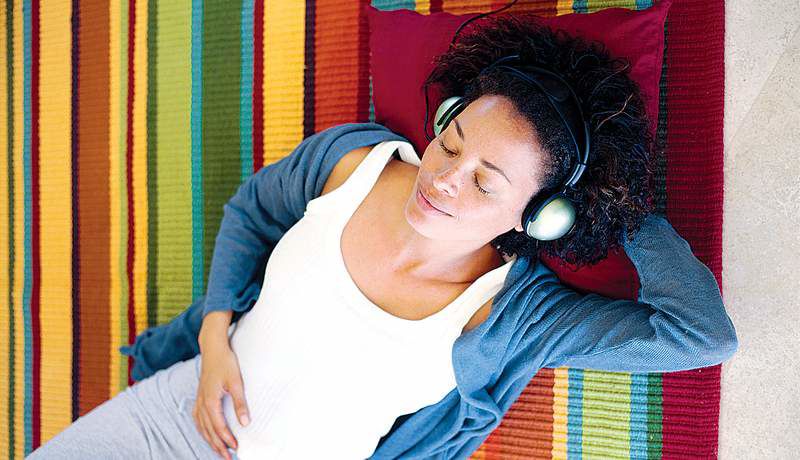Choose outdoor rugs that will look good, last
Published 5:00 am Tuesday, July 26, 2011

- Be able to lie back, relax and know that your outdoor rug is going to last more than a summer by giving it the care it needs.
ORLANDO, Fla. — I was very excited when I brought home my first outdoor rug five years ago. “Outdoor rug” it said, right there on the label. So, silly me, I thought, “Hey, this might be a good rug for outdoors!”
I put it on the back deck, where it did everything an area rug is supposed to do indoors, only outdoors. It defined the space and added welcome pattern, texture, color and pizzazz. My thrill was short lived.
By the end of the summer, the rug had begun to disintegrate. I would pick it up to shake it out, and it would fall apart in my hand. Its once vivid sage green pattern had faded to muted muck. I knew the feeling.
So I did what I do in these circumstances. I chose not to believe this was happening to me. I let the rug lie, all yearlong. By the next summer, it looked worse. Eventually, I shook off my denial and faced facts.
“But this is an outdoor rug! It’s supposed to last outdoors!” Nobody cared or listened for that matter. Next I did the other thing I do when I make a mistake. I made the same mistake again! I bought another outdoor rug.
What happened next will shock you. Two summers later, the rug was in shreds. I picked it up to move it and it fell apart in my hands, yet another casualty of the Colorado sun.
Now that summer’s here, I want to spiff up my patio at my new place in Florida with — you guessed it — an outdoor rug. Here, we don’t have the harsh UV rays of high altitude. But we have brutal heat — oh, honey — and humidity so heavy that mushrooms sprout on your car overnight.
I decided to call an expert to help me dodge disappointment and better manage my rug expectations. I told my saga to Jean-Rene Pelletier, manager for OutdoorRugsOnly.com, who seemed to listen and care.
Like a good salesman he said, “Well, obviously, you need to buy a higher quality rug.”
“Oh, no, you don’t!” I stopped him. “I spent $150 to $200 for my two 8 x 10 rugs, which I know is not a lot for a rug, but now that I’ve literally burned up that money, I’m not paying more!” People must think I’m so gullible.
“It didn’t just fall apart,” I added. “It turned black with mildew or mold, or something disgusting.”
“The rug didn’t mildew,” Pelletier patiently explained. “The dirt on the rug mildewed.”
“All right, all right,” I said. Then, because I still really like outdoor rugs in a masochistic sort of way, I asked him how to make a better choice this time, and get more mileage from my investment.
Outdoor rug tips
• Lasting is relative. Some rugs are more durable than others, but typically you can expect to replace an outdoor rug every couple of years if you leave it exposed to the elements year round. They will last longer if you put them in a covered area and keep them clean. I never managed to do either.
• Hang and hose . Sometimes a good shake and a spot clean are all an outdoor rug needs. You can also vacuum it. For a good cleaning, however, hang it up, hose it off and let it dry completely before putting it back.
• Read the label. When buying a rug, look for a label that says 100% polypropylene, a rubbery plastic invented when Americans lost their taste for baloney, and so meat processing plants had to make something else with all that equipment. The tag should also say that the rug is UV stabilized (to resist fading) as well as mold-, mildew- and weather-resistant.
• OK for indoors. Because outdoor rugs are made of synthetic, durable, all-weather materials and are often very affordable, they’re a good option for indoors, too, especially in high-traffic areas and mudrooms.
• Handmade or machine-made? Machine-made rugs are lighter, dry faster and are better for exposed areas. Handmade rugs are more expensive, have a higher pile, feel softer and more like indoor rugs, but hold water so stay soggy. They’re better for covered porches. Avoid fabric borders, which can deteriorate faster than the rest of the rug.
• Skid protection. Add a mesh pad under the rug if it’s slipping. Otherwise a pad isn’t necessary, although one can help air circulate, which helps prevent rotting. If the rug is thin, a pad will make it look thicker.
• Start with the size. When picking an outdoor rug (and prepare to be overwhelmed by choice), first, determine the size. In a seating area, at least all front legs of furniture should be on the rug. In a dining area, all legs should be on the rug even when chairs are scooted out. When in doubt, size up.
• What’s hot? So many more styles are available since the days when the only choice looked like Astroturf. Rugs have become more colorful and more contemporary in the past few years. Though traditional Asian designs are still popular, more consumers are choosing bold colors and patterns, especially florals, geometrics and botanicals.








